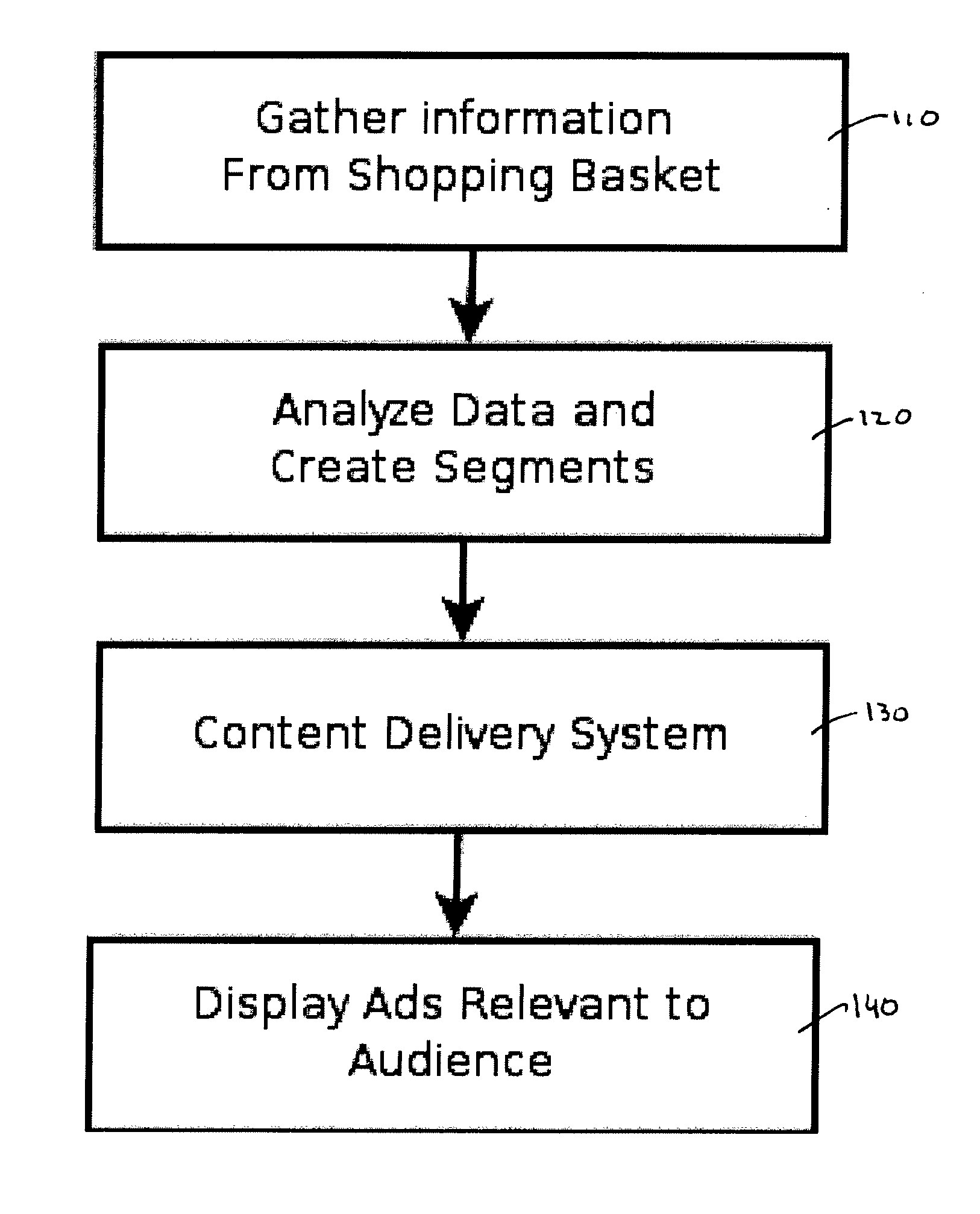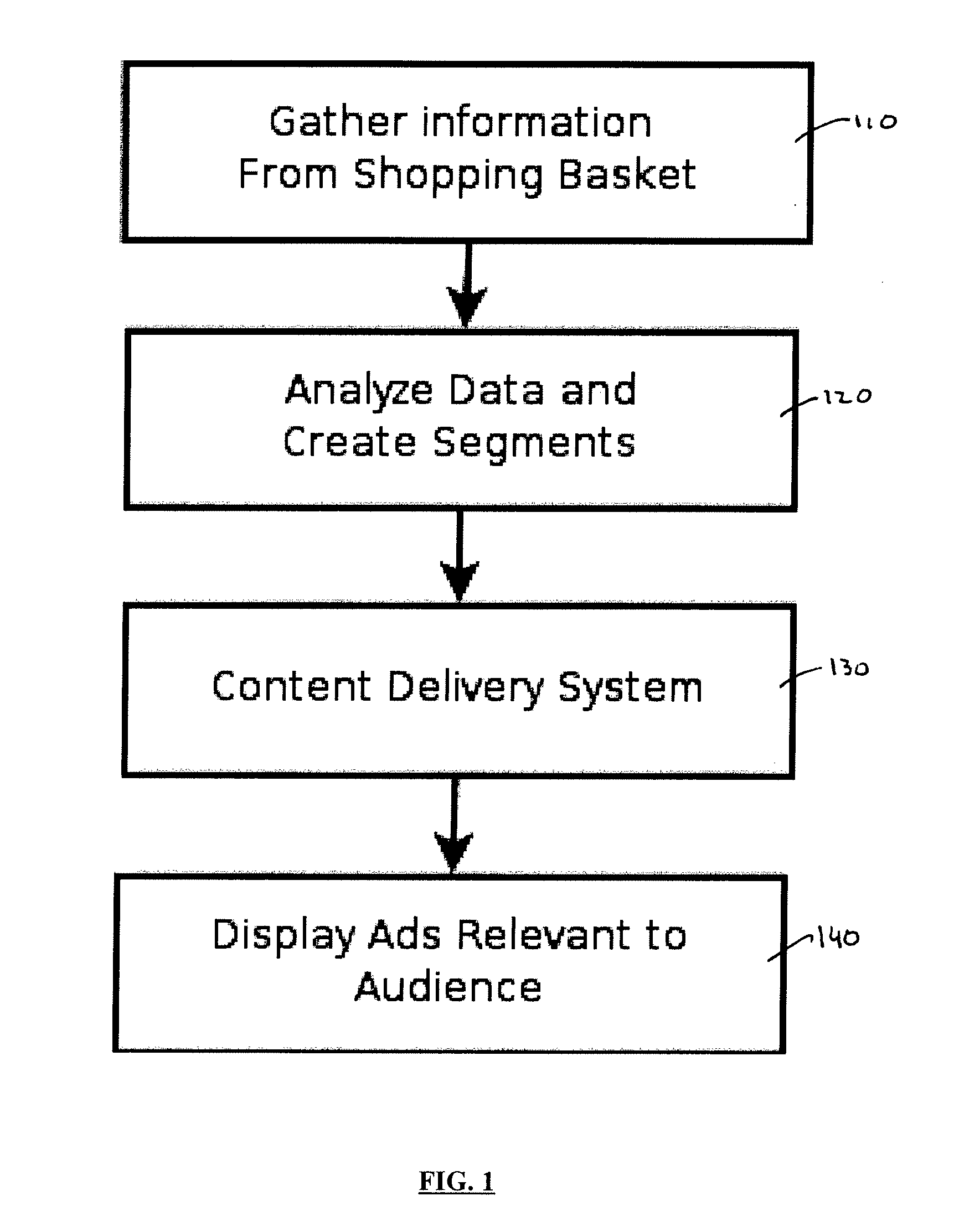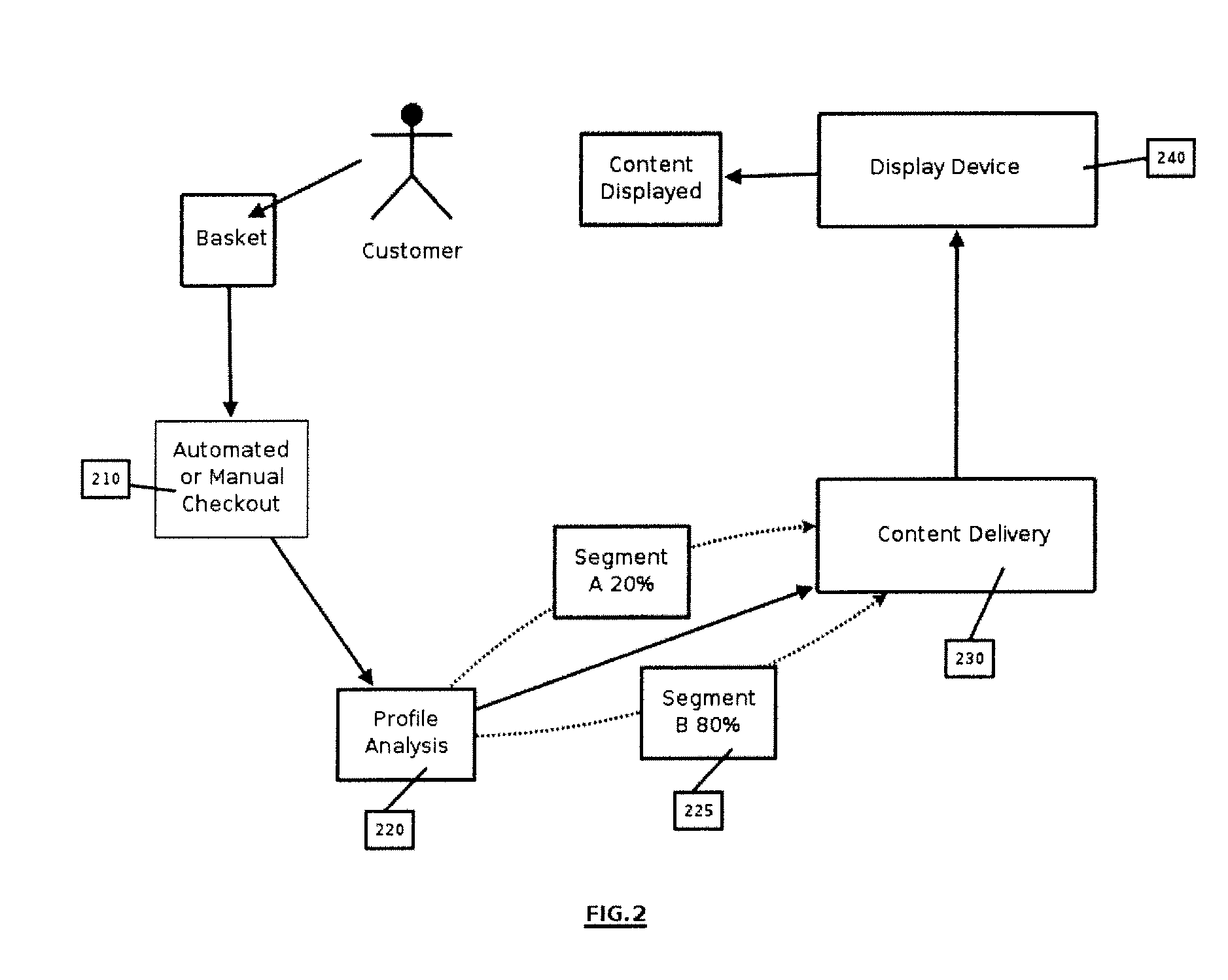Process and system for targeting of content to segmented customer base
a content and customer technology, applied in the field of targeted advertising, can solve the problems of not having real-time in-store methods of tracking consumer spending and quickly adjusting advertising, and achieve the effect of accurately predicting customer buying habits
- Summary
- Abstract
- Description
- Claims
- Application Information
AI Technical Summary
Benefits of technology
Problems solved by technology
Method used
Image
Examples
Embodiment Construction
[0013]A directed advertising data gathering and analysis process and system are disclosed. In the following description, for purposes of explanation, numerous specific details are set forth in order to provide a thorough understanding of the present invention. It will be evident, however, to one of ordinary skill in the art, that the present invention may be practiced without these specific details. In other instances, well-known structures and devices are shown in block diagram form to facilitate explanation. The description of the preferred embodiments is not intended to limit the scope of the claims appended hereto.
[0014]Aspects of the present invention may be implemented on one or more computers executing software instructions. According to one embodiment of the present invention, server and client computer systems transmit and receive data over a computer network and / or a wireless, fiber, or copper-based telecommunications network. The steps of accessing, downloading, and manip...
PUM
 Login to View More
Login to View More Abstract
Description
Claims
Application Information
 Login to View More
Login to View More - R&D
- Intellectual Property
- Life Sciences
- Materials
- Tech Scout
- Unparalleled Data Quality
- Higher Quality Content
- 60% Fewer Hallucinations
Browse by: Latest US Patents, China's latest patents, Technical Efficacy Thesaurus, Application Domain, Technology Topic, Popular Technical Reports.
© 2025 PatSnap. All rights reserved.Legal|Privacy policy|Modern Slavery Act Transparency Statement|Sitemap|About US| Contact US: help@patsnap.com



